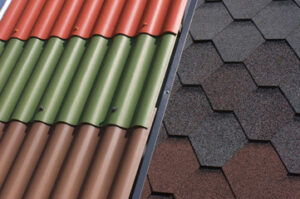A page’s link juice (link equity) is a ranking factor that can help it rank higher in search engines. But not all pages have the same level of link juice.

For instance, a link in the main body of a blog article will pass more link equity than a link in the footer or header. Location also plays a role. Read on Billboards In Houston for more information.
A web page’s rank is determined by the number and quality of inbound links. It also depends on the number and type of outbound links. A higher page rank is more likely to result in a better search engine results position (SERP). The page rank of a webpage can be increased by using link building techniques. These include obtaining high-quality inbound links, creating high-quality content, and using keywords effectively. In addition, a website can improve its page rank by diversifying its anchor text and avoiding low-quality backlinks.
PageRank is an algorithm that determines how well a page will rank on a search engine results page (SERP). It is not the only factor that influences SEO rankings, but it is one of the most important. While there is no direct correlation between a page’s rank and its SEO value, it does play an important role in determining the relevance of a page to a search query. Google’s algorithm takes into account factors like aggregate and anonymized interaction data to assess a webpage’s relevance.
A high pagerank is an indication of a popular and trustworthy resource. This is especially true if the site is in a niche where people are looking for specific information. This can be beneficial for SEO because it means that more users are seeing the resource, hearing its name, talking about it, and looking at it favorably. It is also an indicator that Google views the site as a legitimate and worthwhile source of information.
Although there is no clear-cut method of measuring a website’s link juice, it can be estimated by analyzing the domain and page authority of the pages that are linking to it. Moreover, the page’s relevance to the topic also affects its ranking. For example, a blog post about a piece of research will get more link juice than a sales page, which may be difficult to generate outside links for.
Another way to measure a website’s link juice is by using free tools such as Moz’s Link Explorer and Ahrefs’ Domain Rating (DR) tool. Using these tools will give you an idea of who is linking to your site, as well as their DA and PA scores.
Domain Authority
Domain authority is an important SEO metric that helps determine your website’s potential to rank well in search engine results. It measures a site’s authority based on the number and quality of links that point to it. To improve your DA score, you can increase your backlinks or use other strategies like guest blogging and keyword research. However, it is important to remember that DA is just one of many factors that influence ranking.
Link juice is the SEO value passed from one page to another through a link. It can be transferred between pages via external backlinks or internal links. In general, higher DA pages are more likely to pass on more link juice. This is because they are considered more trustworthy and authoritative. However, it is important to note that not all links will pass link juice, and that it depends on the relevance of the link. For example, a link from a webpage that talks about digital marketing tactics is more valuable than a link from a webpage that discusses Margherita recipes.
A website’s domain authority can be determined by using an SEO tool like Ahrefs or Moz. These tools measure a webpage’s authority based on its domain name and other metrics. This is a good way to see how much juice a web page might have. It is also important to keep in mind that a page’s authority can change over time. The most authoritative pages will continue to have the highest domain authority, but other pages can gain in authority over time.
In addition to building high-quality external links, you can also sculpt your own link juice by focusing on internal linking. This can be done by expanding existing articles into larger “skyscraper” lists and updating old content to include new information. Using dofollow links and maintaining a natural distribution of anchor text can also help boost your link juice.
Despite its importance, it is vital to remember that work on SEO never stops. Search engines are always changing their algorithms, and it is up to you to stay on top of those changes. By staying up to date on the latest developments, you can ensure that your SEO strategy is working and that your website continues to get the best possible rankings.
Relevance
Link juice is a term used in the world of SEO to describe the value that is passed from one page or website to another through hyperlinks. It is believed that these links, which are referred to as “backlinks” by the SEO community, have a direct impact on search engine rankings. These backlinks can be from external websites (also known as “external links”), or they can be from internal pages on a website connecting different pages to each other (“internal links”).
A webpage’s “juice” is determined by its overall authority and quality. The higher the authority, the more “juice” it passes to other webpages. This, in turn, helps these other webpages rank better in search engine results pages. This is why it is important to focus on building quality inbound links to your website – the more high-quality links you have, the better your site will rank.
One of the most important factors in determining link juice is the relevance of the linking content. It is important to use relevant keyword phrases in your anchor text, and it’s also helpful to diversify your anchor text. This way, your links will look more natural and appear more trustworthy to search engines.
Another factor in determining link juice is the domain authority of the linking website. The higher the domain authority, the more link juice it will pass to other sites. This is why it is important to invest in reputable, authoritative link-building services.
While it is hard to predict the future of SEO, it is likely that the importance of link juice will not diminish anytime soon. The concepts of link equity, authority and relevance remain timeless, and they are the foundations upon which search engine algorithms operate.
As long as websites continue to build quality, high-quality, and valuable backlinks, they will continue to receive a fair amount of “juice” from other sites. However, it is essential to remember that this is not a one-way street. It is important to remember that the “juice” is distributed among all outbound links, so it’s best to keep the number of nofollow links to a minimum and to limit the use of internal nofollow links.
Citation Flow
Having high Citation Flow is one of the best ways to increase your PageRank and gain visibility in Google search results. However, it is important to remember that citation flow doesn’t necessarily mean quality. In fact, a high CF may indicate the presence of backlinks from untrustworthy sources. This is why it’s essential to keep an eye on the quality of your backlinks and avoid spammy link-building practices.
A webpage’s citation flow is determined by the authority of its inbound links and the number of dofollow links it contains. The more high-quality inbound links a webpage has, the more authority it will have. These inbound links are critical for a website’s SEO performance and can influence the visibility of a web page in search engine result pages (SERPs).
Link juice is also determined by the quality of outbound links, which are hyperlinks that point to other websites. The more high-quality outbound links a webpage has, the more PageRank it will have and the higher it will rank in SERPs. In addition, outbound links can help boost a website’s DA.
To maximize link juice, it is important to use keyword-rich anchor texts and follow linking best practices. This will ensure that the link is relevant to the user and improve the user experience of a webpage. It is also helpful to diversify anchor text usage and include branded, generic, and long-tail variations. Lastly, it is important to maintain a natural distribution of outbound links.
Internal links are another great way to boost a webpage’s citation flow and SEO performance. When a page receives high-quality inbound links, it will have a higher domain authority and PageRank. It can also pass its authority to other pages within the same site through internal links.
Moreover, internal links can improve the SEO performance of a website by increasing its PageRank and maximizing its link juice. The best way to increase a webpage’s link juice is to acquire high-quality backlinks from authoritative sites, optimize the website’s internal links, use contextual anchor texts, and build Tier 2 links. Lastly, it is important to maintain and monitor the health of a website’s inbound links to maximize its SEO performance.








